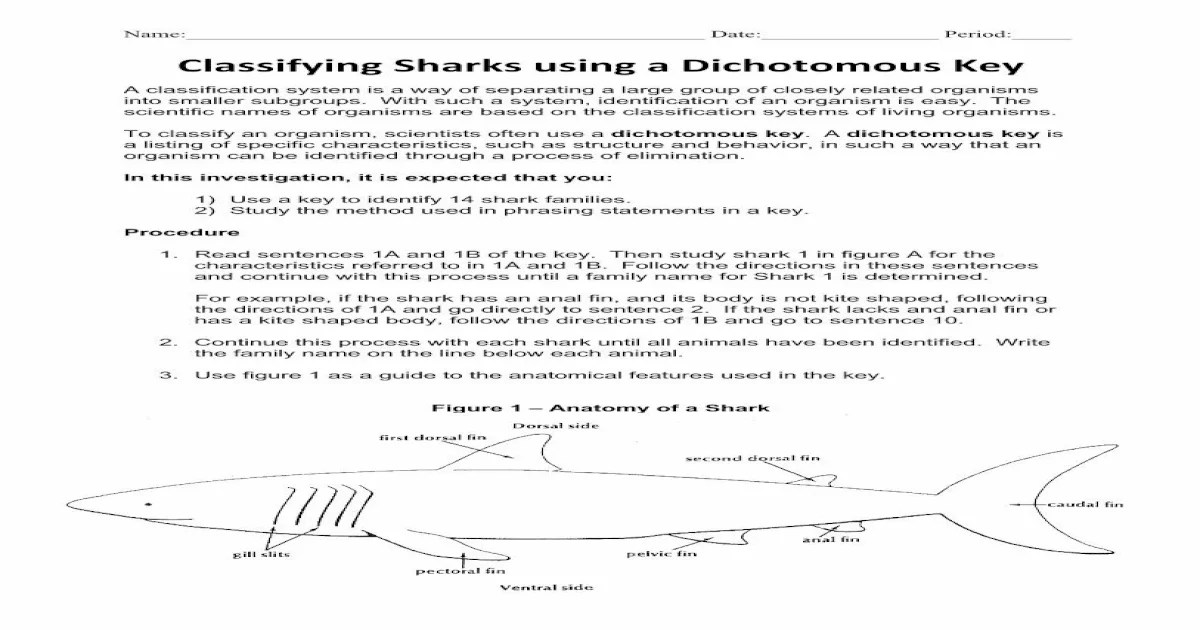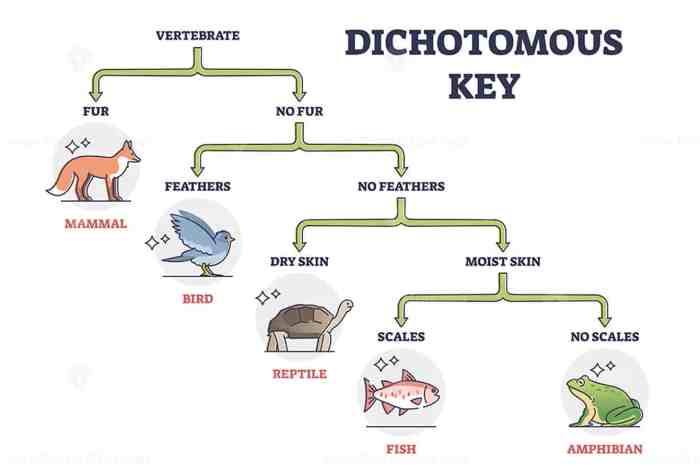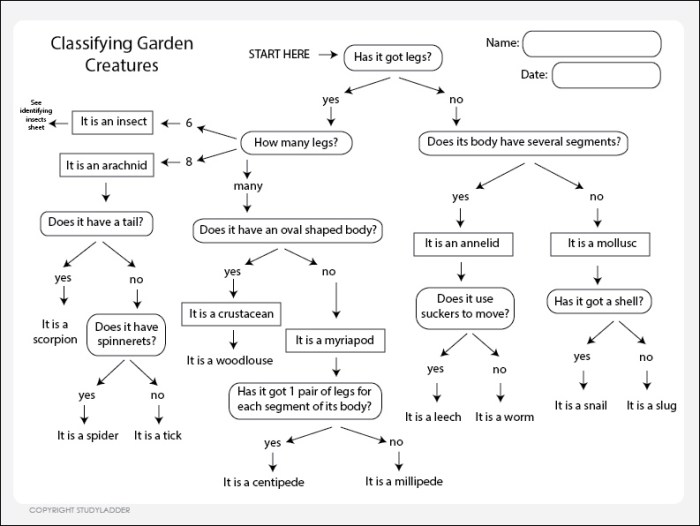Classifying sharks using a dichotomous key is a systematic approach to identifying and distinguishing different shark species based on their morphological and anatomical characteristics. This method involves using a series of paired statements or questions to guide the user through a logical decision-making process, ultimately leading to the correct classification of the specimen.
Dichotomous keys are valuable tools in taxonomy, enabling scientists, researchers, and even hobbyists to accurately identify and categorize sharks, facilitating advancements in scientific research, conservation efforts, and sustainable practices.
Introduction

A dichotomous key is a tool used in taxonomy to identify and classify organisms based on their observable characteristics. It presents a series of paired statements or questions, each leading to one of two possible outcomes. By following the key’s branching structure, one can progressively narrow down the options until the organism is identified.
The purpose of classifying sharks using a dichotomous key is to facilitate their identification and provide a standardized framework for describing and comparing different species. This allows researchers, conservationists, and other stakeholders to accurately identify sharks, understand their diversity, and make informed decisions regarding their management and conservation.
Materials and Methods

The materials required for classifying sharks using a dichotomous key include:
- Shark specimen or detailed observation
- Dichotomous key designed specifically for shark classification
- Magnifying glass (optional)
The steps involved in using a dichotomous key are as follows:
- Start at the top of the key and read the first pair of statements or questions.
- Examine the specimen and determine which statement or question applies.
- Follow the arrow or instruction associated with the chosen statement or question.
- Repeat steps 2 and 3 until a definitive identification is reached.
Key Characteristics for Classification

The key characteristics used to distinguish between different shark species in a dichotomous key typically include:
- Body shape and size
- Fin shape and arrangement
- Tooth structure and number
- Gill slit shape and number
- Dorsal fin position and shape
- Presence or absence of spiracles
- Eye size and shape
- Skin color and pattern
These characteristics are used to create a series of dichotomous choices that allow the user to progressively eliminate species from consideration until the correct identification is reached.
Examples of Dichotomous Keys: Classifying Sharks Using A Dichotomous Key

Several dichotomous keys have been developed specifically for classifying sharks. One commonly used key is the “Field Guide to the Sharks of the World” by Leonard Compagno, Marc Dando, and Sarah Fowler.
This key uses a combination of morphological and anatomical characteristics to identify over 500 shark species. It is designed to be user-friendly and can be used in the field or in the laboratory.
Another example is the “Key to the Sharks of the Northeastern Pacific” by David A. Ebert and Leonard J.V. Compagno.
This key focuses on identifying sharks found in the northeastern Pacific Ocean. It provides detailed descriptions and illustrations to aid in the identification process.
Applications of Classification
The classification of sharks using a dichotomous key has several important applications, including:
- Scientific research and conservation efforts:Accurate identification is crucial for studying shark biology, ecology, and conservation status.
- Fisheries management and sustainable practices:Classification helps identify and manage different shark species for sustainable fishing practices.
- Public education and awareness:Dichotomous keys can be used to educate the public about shark diversity and promote responsible interactions with these animals.
User Queries
What are the advantages of using a dichotomous key for classifying sharks?
Dichotomous keys offer several advantages, including ease of use, accuracy, and consistency. They provide a step-by-step guide that allows users to identify sharks based on observable characteristics, reducing the risk of misidentification. Additionally, dichotomous keys are standardized, ensuring that different users obtain the same results when classifying the same specimen.
What are some limitations of using a dichotomous key for classifying sharks?
While dichotomous keys are generally reliable, they can be limited by the availability of accurate and comprehensive data on shark morphology and anatomy. Additionally, some species may exhibit variations or intermediate characteristics that do not fit neatly into the key’s dichotomous structure, potentially leading to misidentification.
How are dichotomous keys used in scientific research and conservation efforts?
Dichotomous keys play a crucial role in scientific research and conservation efforts by providing a standardized method for identifying and classifying sharks. This information is essential for studying shark populations, assessing biodiversity, and developing conservation strategies. By accurately identifying shark species, researchers and conservationists can better understand their distribution, abundance, and ecological interactions, enabling informed decision-making for their protection and management.